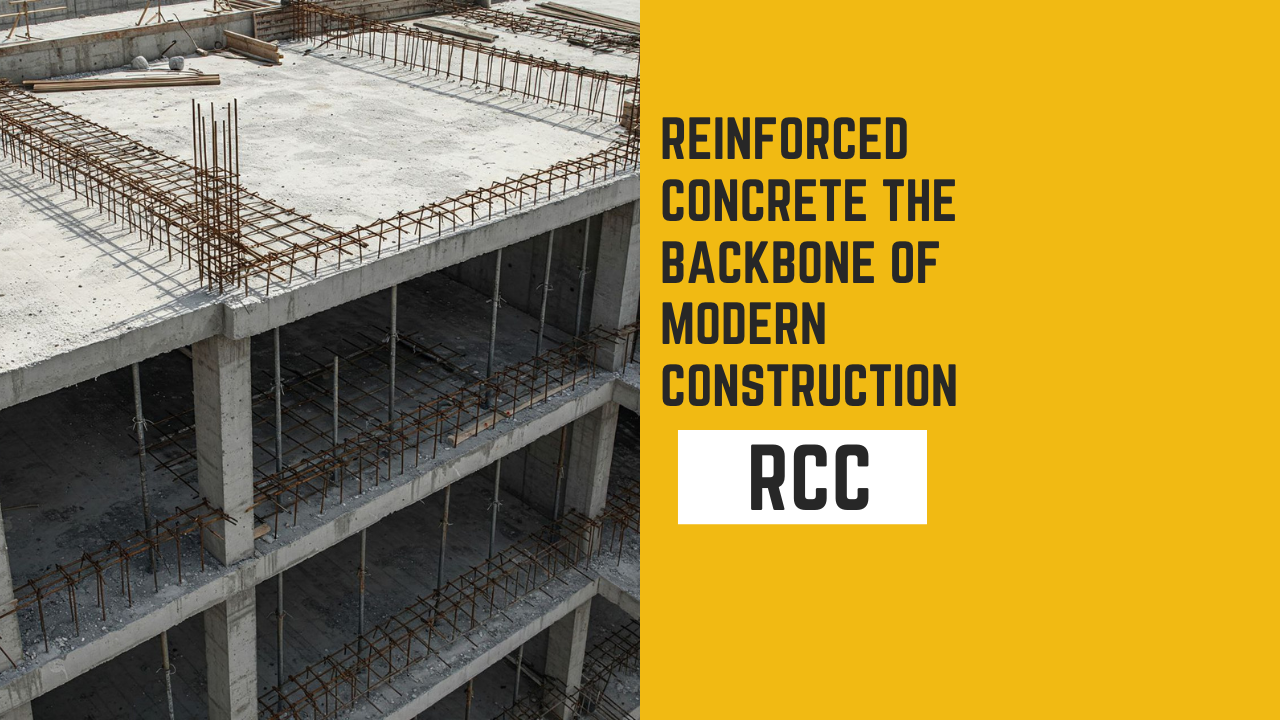Reinforced concrete the Backbone of modern construction

Introduction
Reinforced concrete is one of the most revolutionary and widely used materials in the concrete construction industry. It combines concrete’s compressive strength and steel’s tensile strength, offering durability and versatility unmatched by other building materials.
In this article we will explore the origin, composition, advantages, applications, and challenges, shedding light on why reinforced concrete is integral to the infrastructure of modern society.
What is reinforced concrete?
Reinforced concrete consists of two parts
Concrete is a mix of cement, water, sand, and aggregates. Concrete is good for compressive force But lack of tensile strength
Steel reinforcement: Typical steel bars (rebar), mesh, or fibers embedded within concrete to resist tensile strength.
History of reinforcement concrete
The 19th century saw the invention of reinforced concrete. It was first used in the 1850s by the French businessman François Coignet. But the real pioneer was another Frenchman, Joseph Monier. His creation of iron-reinforced concrete for use in flowerpots and garden benches was patented in 1867. This invention quickly spread to extensive infrastructural initiatives.
Engineers had improved reinforced concrete design concepts by the early 1900s, incorporating them into buildings, bridges, and dams. The quick uptake of this material signaled a shift in engineering and architectural methods.
Composition and properties
The effectiveness of reinforcement concrete lies in the complementary strengths of its components:
1.High Compressive Strength: Concrete is appropriate for pavements, foundations, and columns because it can support heavy loads without deforming.
2.High Tensile Strength: The structural integrity and prevention of cracks are ensured by the resistance of steel reinforcement to tensile pressures.
3.Durability: When properly engineered, reinforced concrete is naturally resistant to weathering, fire, and chemical attacks.
4.Workability: Architects can realize imaginative designs since it can be poured into molds and sculpted into almost any shape.
Admixtures have also been added by contemporary technology to improve qualities including workability, curing time, and environmental resistance.
Applications of Reinforced Concrete
Reinforced concrete is used extensively in construction and infrastructure projects due to its adaptability and strength. Common applications include
1. Buildings: slab, beam, column, staircase, foundation, shear walls, and load-bearing walls.
2. Bridges: Structure built to span a physical gap, such us river, road and
3. Dams: Massive structures capable of holding back water while withstanding immense forces.
4. Roads and Pavements: Durable surfaces for highways, flyovers, and urban streets.
5. Tunnels:is an underground ot underwater passage built through or beneath an obstacles like mountains, hills and rivers
6. Water Tanks: Large containers used to store water
Advantages of Reinforced Concrete
The several benefits of reinforcement concrete account for its widespread use:
1. Stability and Strength: It combines the tensile strength of steel reinforcement with the compressive qualities of concrete.
2. Durability: Over time, reinforced concrete may tolerate weathering and environmental stressors.
3. Fire Resistance: Because concrete is non-combustible, it offers fire protection.
4. Economical: The necessary supplies are generally accessible and reasonably priced.
5. Versatility: It can be shaped by engineers and architects to meet both structural and aesthetic requirements.
Because of these qualities, reinforced concrete has established a solid reputation as a dependable and environmentally friendly building material.
Limitations and Challenges
Although reinforcement concrete has many advantages, it also has several drawbacks.
1. Cracking: Concrete may crack in severe circumstances, though this is lessened by steel reinforcement.
2. Corrosion: The implanted steel may corrode due to exposure to chemicals and moisture, jeopardizing the structural integrity.
3. Weight: Due to its weight, concrete might be difficult to carry and install.
4. Environmental Impact: A major source of carbon emissions is the manufacture of cement.
Engineers use techniques like protective coatings, sophisticated admixtures, and substitute reinforcement materials to overcome these problems.
Recent Innovations in Reinforced Concrete
The performance and sustainability of reinforcement concrete are constantly being improved by the construction sector. Among the major innovations are:
1. Prestressed Concrete: This technique increases the reinforcement’s load-bearing capability by pre-stressing it before concrete is poured.
2. Self-Healing Concrete: When exposed to moisture, bacteria incorporated into the mixture come alive and automatically patch small cracks.
3. Fiber-Reinforced Concrete: This type of concrete uses natural or synthetic fibers to increase durability and decrease cracking.
4. High-Strength Concrete: Designed to withstand harsh environmental factors and forces.
5. Recycled Materials: To lessen the impact on the environment, waste materials are used as aggregates.
Conclusion
As a dependable and adaptable building material, reinforced concrete has endured over time. It can support the most ambitious architectural projects in the world because of its capacity to combine compressive and tensile strengths. Reinforced concrete, from its invention to contemporary advancements, remains essential to creating a sustainable future.
Reinforcement concrete will surely change as engineering techniques and technology progress, continuing to be the foundation of infrastructure around the world.
Reinforcement concrete remains a crucial element in construction because to its unmatched strength, resilience, and adaptability. As developments continue, reinforced concrete will play an increasingly significant role in strong and sustainable construction worldwide.






